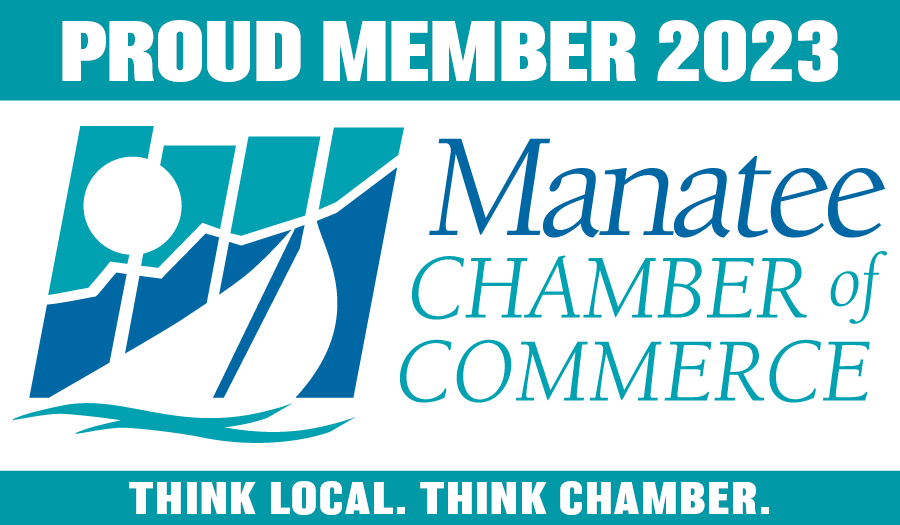Staying active on social media is a critical part of any successful business marketing plan. However, if you’re like most business owners, social media marketing creates more questions than answers.
We often hear from business owners who are struggling to maintain a presence on all the social media platforms. This can be overwhelming even for the most tech-savvy of people!
The good news is, you don’t need to be everywhere. In fact, in almost all cases, you’re much better off sticking with just one or two social media platforms. Narrowing down your options will allow you to commit to posting consistently and truly engaging with your followers.
How to Choose the Best Social Media Platform for Your Business
Now that you know you don’t have to master all the platforms at once, the next obvious question is – how do you choose which one is best for your business? The answer to this question depends on a number of factors, including the type of industry you’re in, your goals, and the audience you’re trying to reach.
While you’re trying to make a decision, here are a few of the most important questions to ask.
Where Are Your Customers Spending Their Time?
The number one rule of social media marketing is: go where your customers are. Ask yourself which social media platforms your ideal customer uses most frequently. Also consider why they’re using those platforms and what type of content they’re most likely to prefer.
If you don’t already know the answers to these questions, take the time to do some market research and create your ideal client profile (also called a customer avatar) before you go any further.
Which Platforms are Best for Your Content Type?
Certain social media platforms are better for specific types of content. For example, if your company primarily produces long-form content like blog posts, podcasts, and videos (also called “macro content”) then you’ll want to choose platforms that are friendly to this format. This would include YouTube for videos and a podcast platform for your audio content.
On the other hand, if you prefer short-form, easy-to-digest content (also called “micro-content,”) then you’ll want to look at platforms like Twitter, Instagram, and Facebook. It’s also possible to break your long-form macro content into smaller bits so you can share them on other channels. This allows you to repurpose one piece of content in a variety of ways so you get a much higher return on your investment.
When choosing your preferred content type, it’s also important to consider that long-form content has a much longer shelf life than micro-content. While a tweet might only make an impact for a couple of hours, a great video or blog post can continue generating hundreds of views per day for months or even years.
How Many Platforms Can You Handle?
Developing a successful presence on social media isn’t just about coming up with a cool idea and clicking “publish” on a post. You’ll need to find engaging content, post consistently, and interact with your followers. In addition, you’ll need to review your analytics and occasionally adjust your strategy. In many cases, you’ll also want to put at least a little bit of money into paid ads or promotions.
This is why it’s so important not to spread yourself too thin. Do yourself a huge favor and stick to one or two platforms. If you feel you’ve mastered this and are ready to do more, then consider adding another platform or two. Just make sure you don’t get in over your head.
The Best Social Platforms for Businesses
The criteria above should help you narrow down your choices, but there’s a good chance you’re still not ready to decide which social media platform is right for your business. To help you out, let’s take a look at the pros and cons of some of the most popular options.
First, we’ll start with the big kid on the block – Facebook. This behemoth currently has more than 2.7 billion monthly active users, making it the largest social media platform in the world. In addition, three-quarters of the platform’s users visit the site at least once a day, while half visit several times a day.
For the most part, no matter what business you’re in, Facebook is worthwhile. It will allow you to connect with the greatest number of people from a wide variety of different backgrounds.
This platform will also allow you to interact in a way that allows you to build a high level of trust with your audience. Many people connect with businesses on Facebook because they can easily see their “about” information, business hours, reviews, contact info, and more in one convenient place.
In addition, the ability to target your ads to a super-specific audience will help you get the most out of your ad dollars. The eCommerce integrations and ability to communicate directly through Facebook Messenger are also major advantages to many small business owners.
There are a few potential drawbacks to using Facebook as your only social media platform. For one, if you don’t follow all the platform’s rules, your page could be temporarily suspended or even shut down. Sometimes Facebook’s algorithms incorrectly flag and suspend a page, which means you could lose your reach through no fault of your own.
In addition, to maintain your presence, you’ll need to commit to consistent engagement. In most cases, you’ll also need an advertising budget since Facebook’s organic (unpaid) reach continues to plummet.
Instagram is another extremely popular platform – they currently have over 1.1 billion active monthly users. However, this platform isn’t right for all businesses. Instead of diving in, it helps to take a look at your target demographics.
Do you market to a younger audience? If so, then you’ll likely want to focus some of your efforts on Instagram. Statistics show that 67% of adults under 30 use the platform as do 72% of all teenagers. Approximately 50% of people under age 50 use it while only 25% of people between 50-65 have Instagram accounts.
In addition, only 42% of high income earners use the platform on a daily basis and only 43% of people with college degrees are regularly on Instagram.
Instagram is perfect for businesses that are comfortable telling their stories visually. If you’re trying to appeal to a young, hip demographic, you’ll likely want an Instagram presence. It’s also very popular among e-commerce businesses, thanks to the new “checkout” feature that allows users to buy items right from their feeds.
To be successful with Instagram, you’ll need a fairly aggressive posting schedule. Most businesses find that they also need a paid ad strategy to get the amount of traction they’re looking for.
This platform is full of professionals who work in a wide variety of industries. There are about 300 million monthly active users on LinkedIn, making this a much smaller platform. However, this can be an advantage. Since there’s not as much competition to show up in news feeds, you’ll have a better chance of being seen without having to pay for ads.
The demographics here are mostly professionals between the ages of 30 – 49. You’ll also find about 50% of people making over $75,000 per year and 50% of people with college degrees using LinkedIn on a regular basis.
Most of the people using LinkedIn are business-minded, making this a good platform for those in the B2B space who want to connect with business decision-makers. It’s also a great place to network and find business partners. Very few people go to LinkedIn looking for entertainment or to do online shopping, so if this is your niche, you’ll want to skip this platform.
If you like to produce content that is short and to-the-point, Twitter might be a great platform for you. This is one of the few platforms where you don’t have to spend a lot of time creating long-form content or beautiful videos or graphics to stand out.
Instead, you can get creative by crafting powerful messages that are short, sharp, and concise. The platform has about 330 million active users, with the largest percentage (38%) being between the ages of 18 – 29. Only 26% of users between the ages of 30 and 49 use Twitter, while only 17% of those 50 to 64 use the platform. Also, only 32% of high income earners and 32% of people with college degrees regularly use Twitter.
One advantage of using Twitter is that the people who are on the platform tend to be highly engaged. It’s also possible to drive a lot of traffic organically without having to pay for advertising. Twitter users are used to having to leave the platform to learn more about a topic, so it’s easy to get people to click over to your site with a well-written tweet. You can further target your audience by making good use of hashtags.
To get traction on Twitter, you’ll need to commit to making multiple tweets every day. There’s a lot of “noise” to compete with, so you could easily get lost in the shuffle. Also, although it’s a great way to drive traffic to your site, this traffic isn’t always likely to result in sales.
Should you bother with Pinterest? The answer is, it depends. For some types of businesses, Pinterest can be the absolute best platform for driving traffic to your site. The platform’s search engine capabilities make it the preferred social media platform for users who are looking for inspiration or helpful content.
The platform currently has about 416 million active users. While many Pinterest users are millennials, over half are women between the ages of 25 and 54. In addition, over 40% of Pinterest users have a household income of over $100,000!
If this is your target demographic, then it’s time to consider getting active on Pinterest. However, to be successful, you’ll need content that is visually appealing and easy to share. This may include recipes, inspirational quotes, how-to instructions, and other similar content. You’re likely to find success with Pinterest if you’re in an industry like photography, interior design, travel, fitness, or other industries that can benefit from this type of marketing strategy.
YouTube
We can’t create a list of popular social media platforms without mentioning YouTube. They have over 2 billion active monthly users and are also the second largest search engine after Google. If your business is active on YouTube, you’ll have the ability to reach a broad audience and show up in search results. Since video is also the preferred media format for many users, this makes YouTube seem like a “must” on your list of social media platforms.
However, it’s important to note that maintaining a presence here requires a massive amount of work. To do it right, you’ll need a video setup that includes a camera, microphones, lighting, and editing equipment. While most up-to-date smartphones can record video just fine, many YouTube users expect high-quality video and audio productions.
Is a presence on this platform worth the investment? Maybe. It’s popular among users of all ages and is used heavily by high-income earners. Statistics show that 83% of people earning over $75k a year and 80% of people with college degrees regularly use YouTube. Since people go there both for entertainment and to learn how to do things, there are a wide variety of ways that you can use the platform to boost your business.
Need Help with Your Social Media Marketing?
Hopefully this information helped you narrow down which social media platforms are best for your business. However, if you’re like most business owners, you probably still feel a bit overwhelmed. Don’t worry, we can help!
Discover Bradenton Marketing offers done-for-you social media marketing that will allow you to step away from it altogether and focus on the things you do best. Check out our site for more info. or contact us today to schedule a personalized consultation for free!



